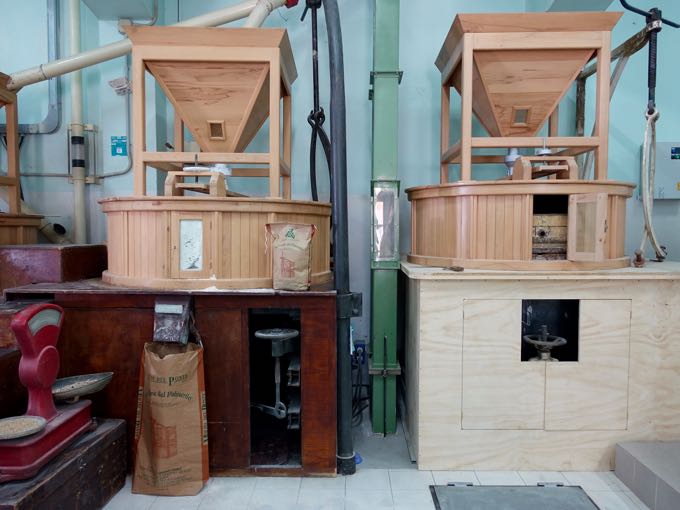
In Sicily last week I found myself once again in a flour mill learning all about pasta. This time around I was invited to Sicily by the wine company Zonin. Zonin is known for being the biggest wine producer in Italy. And while they do make a great quantity of wine they also have 10 separate estates up and down Italy that produce some of Italy’s best wines. At first I thought I was invited to Sicily just to visit their estate there, Principi di Butera. Since I’m in no way a wine writer, I was about to stay no to this tempting invitation. But I’m glad I looked at the itinerary more closely. Yes, we’d be doing an awful lot of wine-drinking (I’m very good at the drinking part of this vs the writing part) , including a visit to the Butera Estate, but there was also a lot of food stuff going on. And not just any food stuff.
On the itinerary were visits to some of the most interesting food producers in Sicily today. People I’d long wanted to visit and get to know. The idea behind the trip, I soon learned, was not just to taste and learn about Zonin’s Sicilian Estate and their wines ,but to put them in a broader cultural perspective that has as much to do with cheese and wheat and chocolate as about pruning, vines and bariques.
And so I found myself, early one morning, at one of the most exciting flour mills in Sicily. I’d first heard about Filippo Drago from Fabrizia Lanza, and had tasted his pasta, made from Tumminia wheat, thanks to Beatrice Ughi. Both women sung his praises, and I was fascinated by someone who would search out an ancient grain as a way to revive and preserve Sicily’s heritage. I finally ‘met’ Filippo via Facebook, and have been following what he is doing with grains, flour and pasta. So I was thrilled not only for a chance to meet him in person, but to also visit his mill, Molini del Ponte.
Like many things in Sicily, the visit was not quite what I expected. I guess I had in mind a bucolic mill set amid fields of wheat. Instead we drove down a narrow alley to an industrial building on the outskirts of Castelvetrano. This small town is known for its dark bread, made with tumminia wheat, so I guess I shouldn’t have been so surprised that this is where Filippo set up Molini del Ponte.
We had a full tour of the mill, during which time Filippo explained the various challenges, and benefits, of working with an ancient grain. His line of flour, Le Farine del Palmento, not only focuses on ancient grains such as Tumminia, but processes the grain using a stone mill, which preserves the germ. Among the many challenges that face Drago is actually getting farmers to plant these grains which are native to Sicily. Not just tumminia, but also grains like russello, perciasacchi (a type of farro), bidi, biancolilla and others. These grains have a very low production per hectare and so are risky for farmers to plant. Part of Drago’s approach is to provide a market for these grains (pricing is tricky), and so encourage cultivation. Another challenge involves retaining the germ, which makes the flour extremely perishable and banning the use of any types of additives, which means the grain must be very clean before milling.
Drago has two beautiful stone mills which we were able to see in action. But he is also at the vanguard of developing new milling techniques which allow the grain to be milled faster (and so more affordably), but still at low temperatures which preserve its nutritional qualities as well as its unique taste.
All this would have been interesting enough, but we also got the chance to actually work with the flour right in the center of the mill. Chef Bonetta dell’Oglio was there to teach us how to make a traditional Sicilian pasta shape: Busiate.
I’ve written about Drago’s busiate in the past, which I’ve used straight from the bag. So it was exciting to get a chance to try to make them myself.
It was also fun. Did I mention that my press-trip mates were all male sommeliers and wine writers? While I learned quite a bit from them about tasting wine over the course of our three days in Sicily, I think that I was finally ahead of the learning curve when it came to getting our hands full of flour.
Bonetta helped us make the dough, with just flour and water. We kneaded it until it was quite stiff. Then, using a small wooden rod, we learned how to roll the dough into the spirally shaped pasta. After a few tries even the guys got it down. It was fun and not nearly as hard as it looks.
Here is a video of us making the pasta shapes. Sorry I didn’t get more footage of this part of things, but I was busy making pasta! (Side note: I’ve already been sorely reprimanded on Instagram for making pasta with nail polish. So two things to those naysayers: 1) I didn’t know we were going to be making pasta, so didn’t plan ahead. And 2) I wear semi permanent nail polish, which you can’t get off even if you tried)
What I did get on film though, were two very nifty recipes that Bonetta whipped up with seemingly little effort, allowing us to eat the pasta we had just made. Using just two burners set up in the middle of the mill and a handful of ingredients, the results were delicious. The first was a ‘sauce’ made of:
-Toasted Almonds
-Olive oil
-Lemon zest
-Black pepper
-Grated fresh pecorino cheese
The other involved:
-Ricotta
-Black pepper
I think by watching the videos you can figure out the recipe. As for quantities, Bonetta was just winging it, and it came out a bit differently for each batch she made. In fact, the final dish, with just the ricotta, was made because she had run out of almonds.
So have fun with these ‘recipes’, and feel free to wing it too. If you want to help support ancient Sicilian grains then you can buy a pack of busiate. But both recipes would also work perfectly with spiral shaped fusilli.
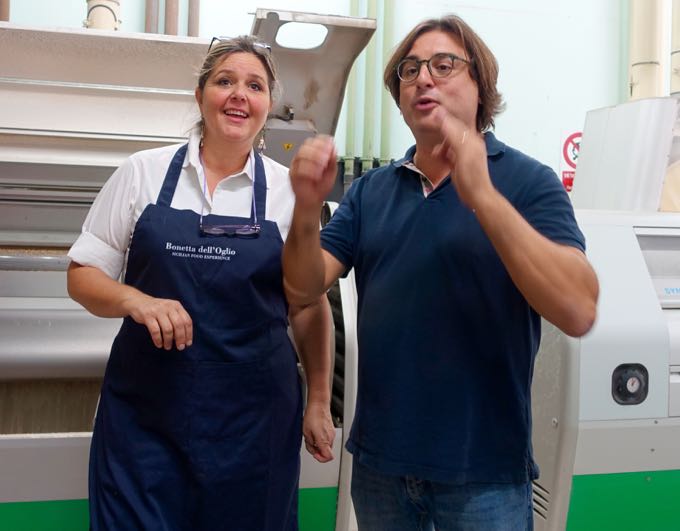
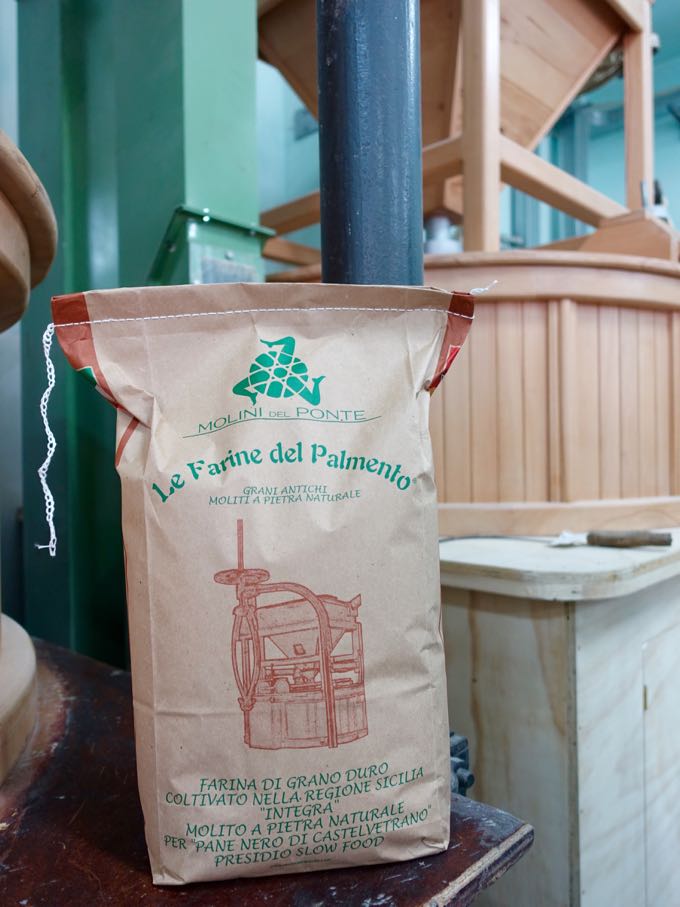
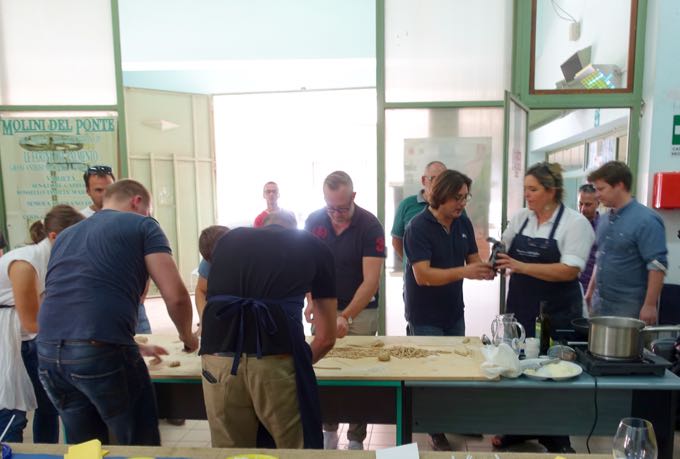
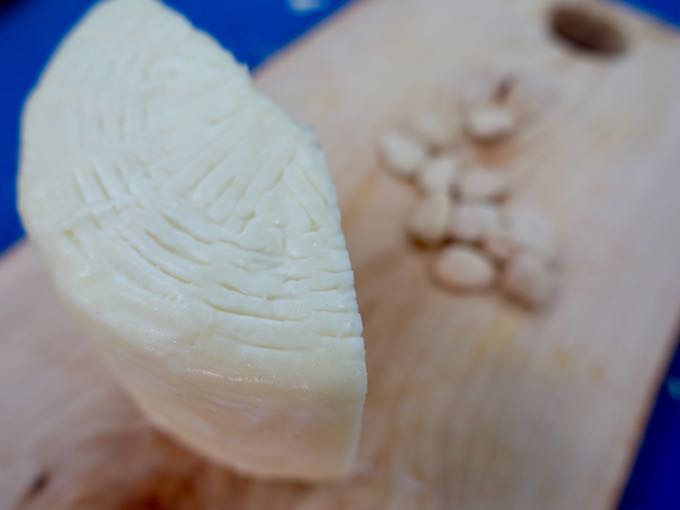
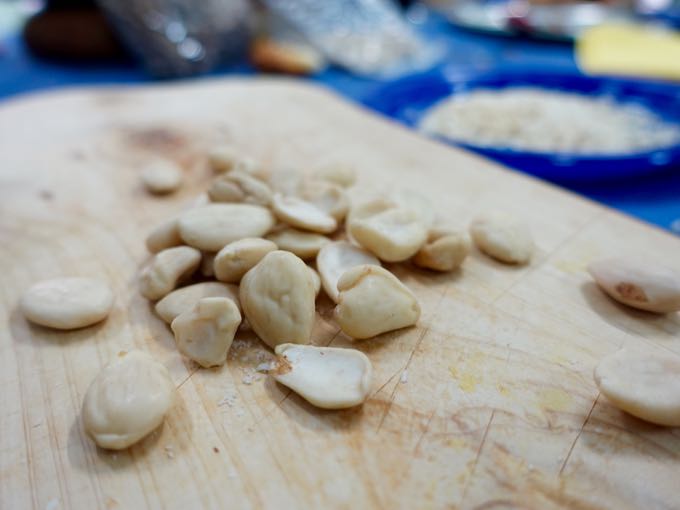
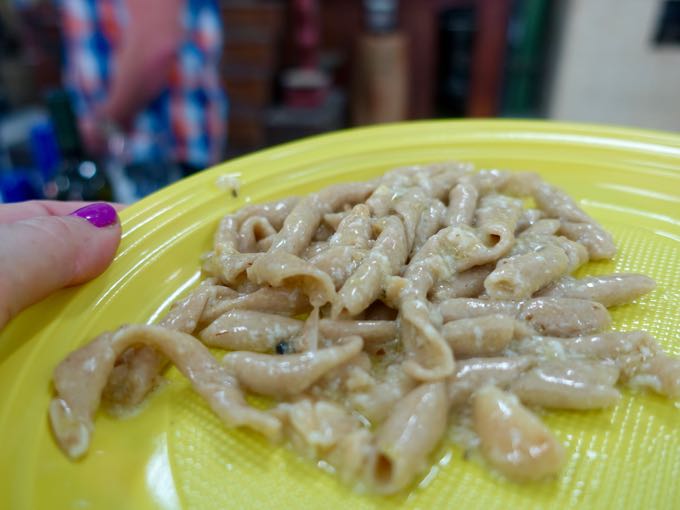
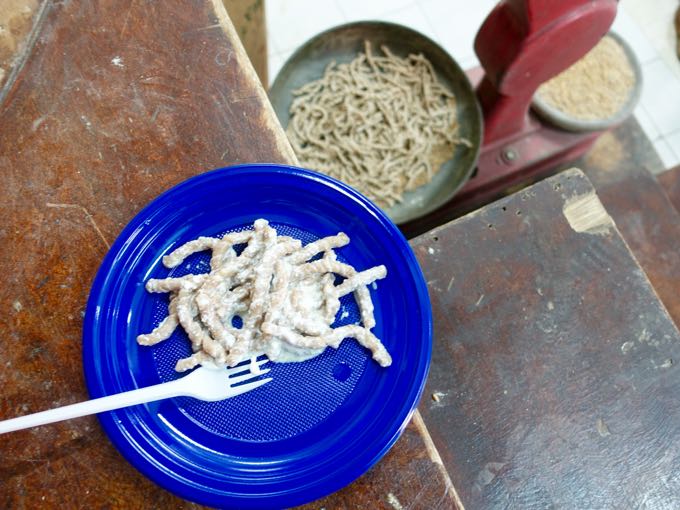
I visited Sicily and the Molini del Ponte while on a press trip sponsored by the winemakers Zonin.
For more information on dining in Italy download my app, EAT ITALY. EAT ITALY is a free app, and contains guides to Venice, Milan, Rome, Florence and Umbria (and an ever expanding list of regions and cities) available as in-app purchases for both iPhone and iPad.
This looks like yet another hidden classic. As always thanks for the education!
Signed -starving in the USA
Can’t wait to try the ricotta recipe. Thanks Elizabeth!
So enjoyed this post, it felt as though I was there.
I’d love to use Le Farine del Palmento,to make this pasta, but until I can get some to Hawaii do you think semolina would work ok? I had to get that on line, too, as well as 00 flour–not complaining, there’s plenty to eat here 🙂 but we’re a little light on special flours. Just starting getting into fresh pastas, & loving it.
Sidenote: I think your videos are very good, very well done–and sometimes funny as hell! That guy with the burning headpiece running around—what can I say? Laughed a lot!
You can use semolina for this one, I think. Which is grano duro in Italy.